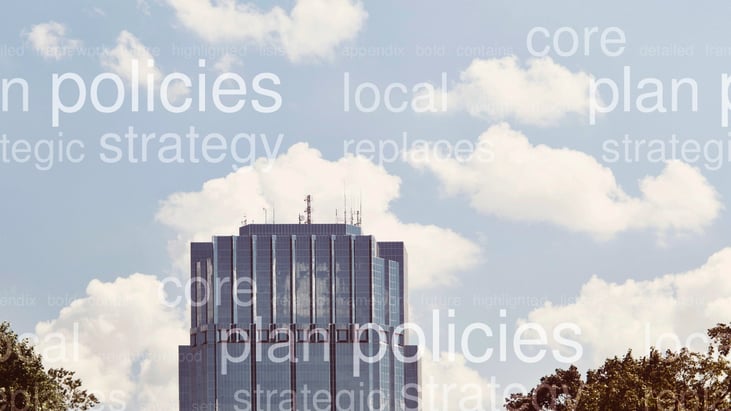Do you love catalyst uses? Public engagement and the language of planning

By David Janner-Klausner | 19/01/16 15:30
2 min read

It is time to invert the language of planning. Build the arguments and descriptions from the perspective of residents.
At Commonplace we create clear, easy-to-use websites and web apps that enable people to engage in shaping their localities. Our clients value transparency and having open communications with the public. This open communication is part of creating shared understandings about the public realm, the space which we all share.
We share public spaces but we don’t always all agree about them. All local development and progress involves compromise. The compromise sometimes means we will not see the outcome we desire - or, quite often, that it will be delayed, coming lower on the order of priorities. Not everything can be done at once and the role of planning is to codify purpose, priority and sequence. For the outcome of planning to carry legitimacy, a key factor is for the public to understand decisions and priorities - and how they are arrived at.
An open, comprehensible and transparent planning process does exactly that. But the language of planning can get in the way. Borrowing from the thick of a vital planning document, here’s my question: do you love catalyst uses?
You might love them if you understood them. You might enthusiastically support giving the catalysts priority over other uses if you understood what they were, and what it is that they wanted to use, and why.
And that’s the rub. Planning documents are written in planning-speak. In planning-speak, “uses” are “land uses”. The “catalysts” are projects that will help accelerate other development. Public transport projects are an example - no-one is keen on years of disruption they cause, but they can catalyse wider development.
The language needs inverting. Documents should be composed with the primary purpose of building trust and legitimacy; then work out the best way to present the inevitable technical detail. Use illustrations. Make the choices comprehensible. Use Commonplace but even more than that, think Commonplace.
What do I mean, think Commonplace? I mean, think of the user experience as an essential, inimitable part of the planning process. You are not presenting a document, you are shaping citizens’ future. The citizens, not the document, are the focus.
I was tipped off by a planning officer to look at a competitor’s product, which they were using happily. It did a great job of indexing an existing planning document and directing people to the questions at the end of each chapter. But there was no visuals, no thematic indexing, and no way of entering the document to find an answer to the simple, primary questions, “how will this affect me”; “How will the neighbourhood change if this plan is supported?”; and “Why should I support this?”
Clarity on how plans answer these questions is acutely needed. As local funding declines rapidly, maintaining public realms and services will depend increasingly on new partnerships between public sector, private sector and citizens (*). These partnerships, and the interests within them, will be part of shaping the public realm and planning will codify the trade-offs. For these partnerships to work, people need to engage with, trust and influence the processes leading to them.
A friend of mine, Andy, works as advisor to the Mayor of Somerville, Massachusetts. Andy pointed me to the way his town has inverted how it thinks of the planning process. They are moving from a traditional confrontational practice of:
DESIGN – PRESENT – DEFEND
to a different framework, expressed as:
OUTREACH – DIALOGUE – DECIDE – IMPLEMENT
The traditional cycle - Design - Present - Defend - is frequently a cycle of attrition. It impacts negatively on the long-term relationship between citizen and government. “we keep saying no and they keep trying” is a common theme in local development. Each round in the contest extracts a price in time, money and trust.
Conversely, dialogue may take time - but gives a better chance of implementation. It also leaves a positive legacy. Building trust is not only instinctively a good goal for a healthy democracy, it is also increasingly fundamental to having sustainable and good public realms. The same will apply to other local services, too - we will need to harness imagination and collaboration to sustain quality of life.
Commonplace is a tool for the age of Outreach - Dialogue - Decide - Implement. More and more agencies in the public realm - local authorities, developers and others - understand the need to invert processes and place citizens at their centre. Join them - and us!
.png)